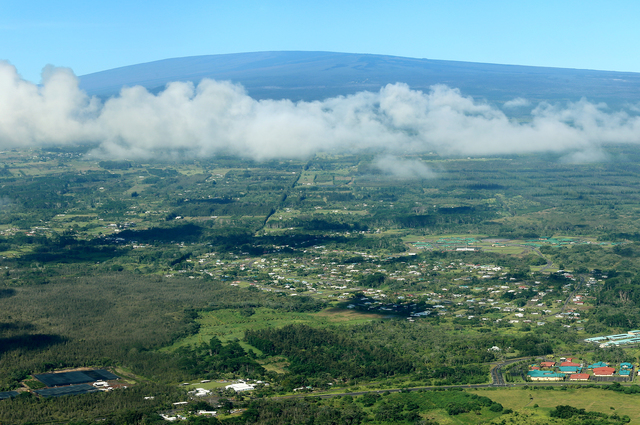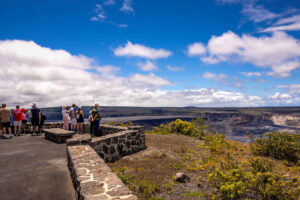Scientists at Hawaiian Volcano Observatory on Thursday raised the alert level for Mauna Loa from “normal” to “advisory.”
A written HVO statement explained that the change from the lowest alert level to the next higher level is because the volcano “is showing signs of unrest that are above known background levels, but it does not mean that a Mauna Loa eruption is imminent or certain.”
“It’s possible that the increased level of activity at Mauna Loa could continue for many months, or years, without leading to an eruption,” said Tina Neal, HVO’s scientist-in-charge. “It is also possible that the current unrest could be a precursor to the next eruption of Mauna Loa. But at this early stage, we cannot determine precisely which possibility is more likely.”
“It doesn’t really change our day-to-day operations. We continue to be vigilant and monitor the volcano,” added HVO geologist Frank Trusdell, who’s extensively mapped and studied Mauna Loa.
John Drummond, Hawaii County Civil Defense’s acting administrator, said his agency is paying attention but has no immediate plans to act on HVO’s announcement.
“It’s just an advisory level, so we wouldn’t do anything until (the status) is elevated even more. But it just indicates that they’re keeping a closer watch on it,” he said.
If the situation warrants, the alert level would be raised to “watch” or “warning” status.
According to HVO’s website, a watch means the volcano “is exhibiting heightened or escalating unrest with increased potential of eruption, time-frame uncertain” or an “eruption is underway but poses limited hazards.” A warning means a “hazardous eruption is imminent, underway, or suspected.”
Mauna Loa’s last eruption began March 25, 1984, and lasted a little more than three weeks. It was preceded by up to three years of increased earthquake activity.
By contrast, the most recent earthquake activity within Mauna Loa remains comparatively low.
“With improvements in technology, we have better equipment now to monitor the volcano,” Trusdell said. “We recently upgraded our deformation and seismic networks. … We’ve added increased seismic instruments to the volcano, and we’ve also added GPS. We now have tilt meters and webcams. All of that technology helps us improve our ability to monitor the volcano. In addition, we also have satellite technology. So instead of just seeing changes in the caldera of the volcano, we can actually, with satellite and GPS technology, look at changes across the entire flanks of the volcano, something we weren’t able to do prior to 1984.”
The 1984 eruption was centered on the volcano’s northeast rift zone and sent lava flowing toward Hilo and Kulani Correctional Facility, then known as Kulani Prison.
There are other rift zones, as well. Mauna Loa’s June 1, 1950, eruption from its southwest rift zone sent lava over Highway 11 in about three hours and into the ocean shortly afterwards. It also consumed several homes and the post office in South Kona’s Hookena Mauka village. There were no fatalities, but for some, it was a close call because of the lateness of the hour and the swiftness of the lava. That eruption lasted 23 days.
Although it’s been 31 years since Mauna Loa has erupted, history suggests it erupts frequently.
“From our studies of looking at the long-term eruptive history and mapping out the lava flows on Mauna Loa, the eruption frequency for the past 3,000 years has been one eruption every six years or so,” Trusdell noted. “So the tendency is for people to say, ‘Well, Mauna Loa is overdue.’
“But in reality, the volcanoes are complex, and … we have to treat (eruptions) as random, independent events. Right now, the seismicity is above background (levels). We’re looking at the deformation and it shows us a slight accumulation of magma within the volcano. Since both of those things are pointing to the volcano being above background, we’re issuing this notice.
“Mauna Loa is still an active volcano. People shouldn’t forget that. They should be aware of the hazards of Mauna Loa. People should (also) know that an eruption is not imminent. And finally, the Hawaiian Volcano Observatory is monitoring Mauna Loa. And if there’s any change in activity, then the public will be informed.”
In response to the status change, HVO is posting weekly Mauna Loa updates on its website at http://hvo.wr.usgs.gov.
The updates are available via email by signing up for HVO notices through the free USGS Volcano Notification Service at http://volcanoes.usgs.gov/vns/.
Email John Burnett at jburnett@hawaiitribune-herald.com.









